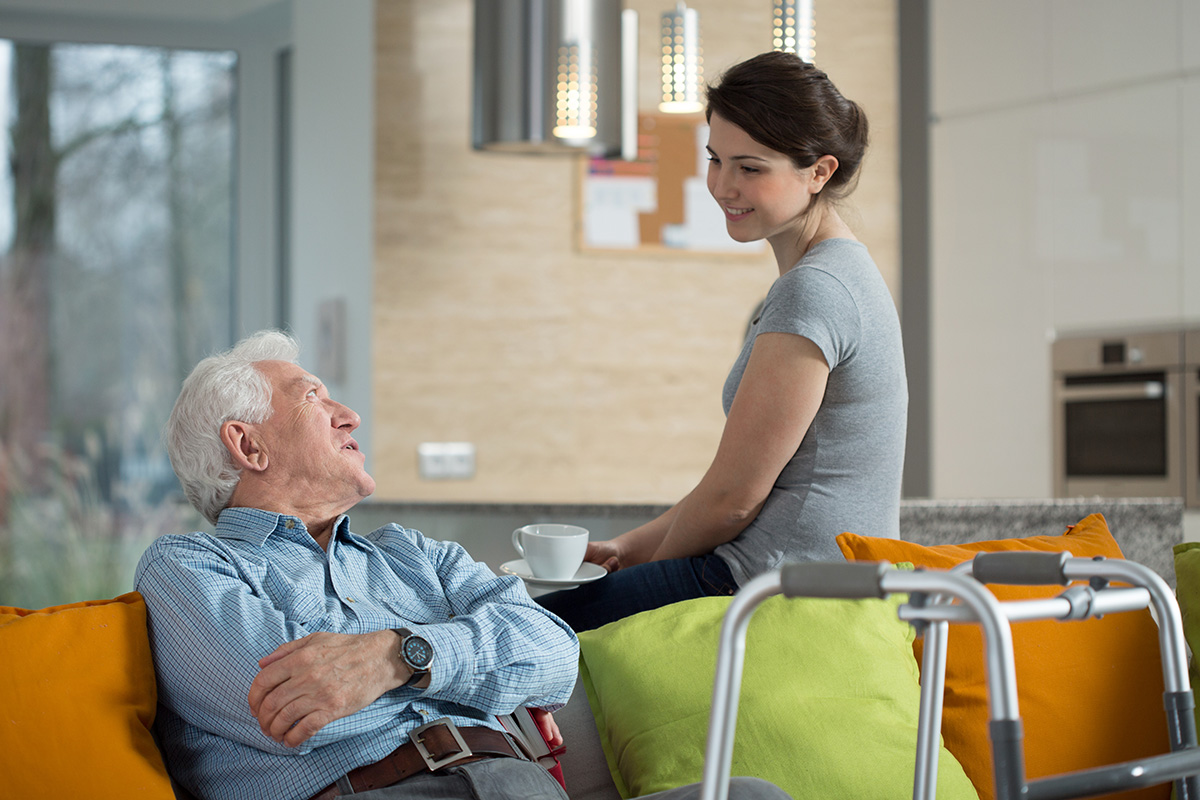- HOME
- SERVICES
- WHERE TO BEGIN
- LOCATIONS
- RESOURCES
- HEALTH PLAN SERVICES
- CAREERS
- EMPLOYEES

The At-Home Joint Recovery Alternative
Studies have found that patients who have undergone joint replacement surgery (for example, hip or knee) had better medical outcomes and less recurring incidents of hospitalization when they recovered at home versus a nursing home or assisted living facility. Planning to recover from joint replacement with home health care can make the process less stressful for you or a loved one – but it’s important also to know what to expect during the healing process.
The average hospital stay following joint replacement surgery is three to five days. While some patients traditionally have been directly transferred to rehabilitation centers to begin intensive forms of physical therapy, many patients today are able to receive physical therapy specialist visits, right in the comfort of their own homes.
For hip replacement surgery (for example), a physical therapy (PT) specialist may come to the patient’s home two-to-three times per week until the patient is able to visit an outpatient physical therapy center. The University of California San Francisco Medical Center reports that the “vast majority” of their patients return home after joint replacement surgery.
Knee and hip replacement patients cannot walk bearing their full weight after surgery and will need the support of assistive tools such as a walker, a pair of crutches or a cane. As you or your loved one progress in physical therapy, the use of these tools will gradually decrease. It is important, however, to ensure that your home can accommodate these tools.
Maintaining prescribed exercise regimens is critical, but be sure to engage in these activities with your home health aide or visiting physical therapist to ensure safety. Speak with your home health aide and physician about pain management.
As you or your loved one begins to gain greater mobility and experience less discomfort, be sure to speak with your home health aide, physical therapist and/or physician about resuming normal activities. It’s important to stay active, but be careful in attempting new tasks that you do not strain your new joints. Preferably, you’ll have at least 90 degrees of flexion to resume normal walking and to climb stairs.
Be sure to speak with your doctor about the benefits of recuperating at home to see if it’s the right solution for you.
At Home Recovery Checklist:
- Can a walker move easily through the home without hitting any furniture?
- Have area rugs been removed to avoid slipping?
- Clear any clutter (including cords) from pathways.
- Have arrangements been made (sleeping arrangements, etc.) to avoid excessive stair climbing?
- Are there chairs that are easy to get in and out of in the home? (Avoid recliners.)
- Is there grab-and-go food available in the home to avoid having to stand to prep and cook?
- Is special equipment needed in the home, and have arrangements been made to ensure that it’s delivered? (Continuous Passive Motion Machines, for example for knee replacement.)
- Keep your home well-lit, and set up nightlights to help avoid any falls during the night.
- Ensure that your bathtub or shower is secure with a railing and non-slip mats.
- Keep a mobile phone within reach in case of any emergencies.
